History of the Botanic Garden from 1982 to date
The Botanic Garden of the University of Rome Tor Vergata
In 1982 the University of Rome Tor Vergata was founded and almost simultaneously - in 1985 - a preliminary project for its Botanic Garden was drafted. From the very beginning it proved to be very ambitious by choosing a considerably wide area of 82 ha, which instantly made the Botanic Garden of Tor Vergata the largest in Italy and one of the largest in Europe. In March 1986 a Commission appointed by the Italian Botanical Society visited the area and delivered a favourable opinion on the project implementation.
The changes made to the area and the redefinition of the general arrangement plan made the start of the work difficult, and the Botanic Garden underwent a first, long standstill which lasted until the new millennium.
In 1998 the first part of the current arboretum was planted on about 2000 sq.m.: an example of high Maquis mainly including Quercus ilex (Holm Oak), Quercus suber (Cork Oak) and Acer monspessolanum (Montpellier Maple) whereas the shrub counts species such as Phyllirea angustifolia (Phillyrea), Pistacia lentiscus (Mastic Tree), Myrtus communis (Myrtle) and Arbutus unedo (Strawberry Tree).
Jubilee 2000 - and in particular the World Youth Day organised in the garden - favoured the implementation of some infrastructure and covered the area in meadows. Hence the biblical garden was planted: it was arranged in order to represent the entrance of the Holy Door through which John Paul II passed with 5 young people from 5 continents. In the Garden some of the species mentioned in the Bible can be found, such as: Quercus macrolepis Kotschy, Cedrus libani A.Rich., Pinus halepensis Mill., Cinnamomum camphora (L.) Sieb., and many others.
Due to new local arrangements, between 2000 and 2004 the Botanical Garden required the original design to be revisited to guarantee an extended site sharing. In June 2005 a new project was presented: the Botanic Garden covered the institutional function of living collection of plant biodiversity and educational tool, but thanks to its size it was to be perceived as perfectly open and integrated with the civil society, hence playing a social role as well as an active role in research together with companies.
At the end of 2006 the Botanic Garden of Tor Vergata together with the Botanic Gardens of La Sapienza, Roma Tre and Viterbo presented the project ‘Botanic Gardens and the conservation of endangered species in Lazio’ to Lazio Regional Administration in order to contribute to the conservation of spontaneous vegetation at risk in the region.
Finally, after a ‘stop-and-go’ start of nearly two decades, the Botanic Garden was opened and in 2008 a centre for germplasm conservation was inaugurated with three greenhouses and scientific laboratories equipped according to the most modern requirements for germplasm conservation.
In 2010 the initiative ‘Adopt a tree’ kicked off and became a great success thanks to a ‘Citizen campaign’ involving schools, university students, staff and local residents. During the first official event open to all, i.e.’Spring at the Botanic Garden of Tor Vergata’, about 2000 people visited the gardens and adopted 400 trees. Thanks to such initiative in November 2010 400 mesophile wood plants were planted (Picture 1), thus adding around 3 ha to the arboretum. At the end of March 2011 a transition forest was planted: it connected the first original area to the pre-existing maquis; further 350 plants were adopted during a number of initiatives covering another 2 hectares of land.
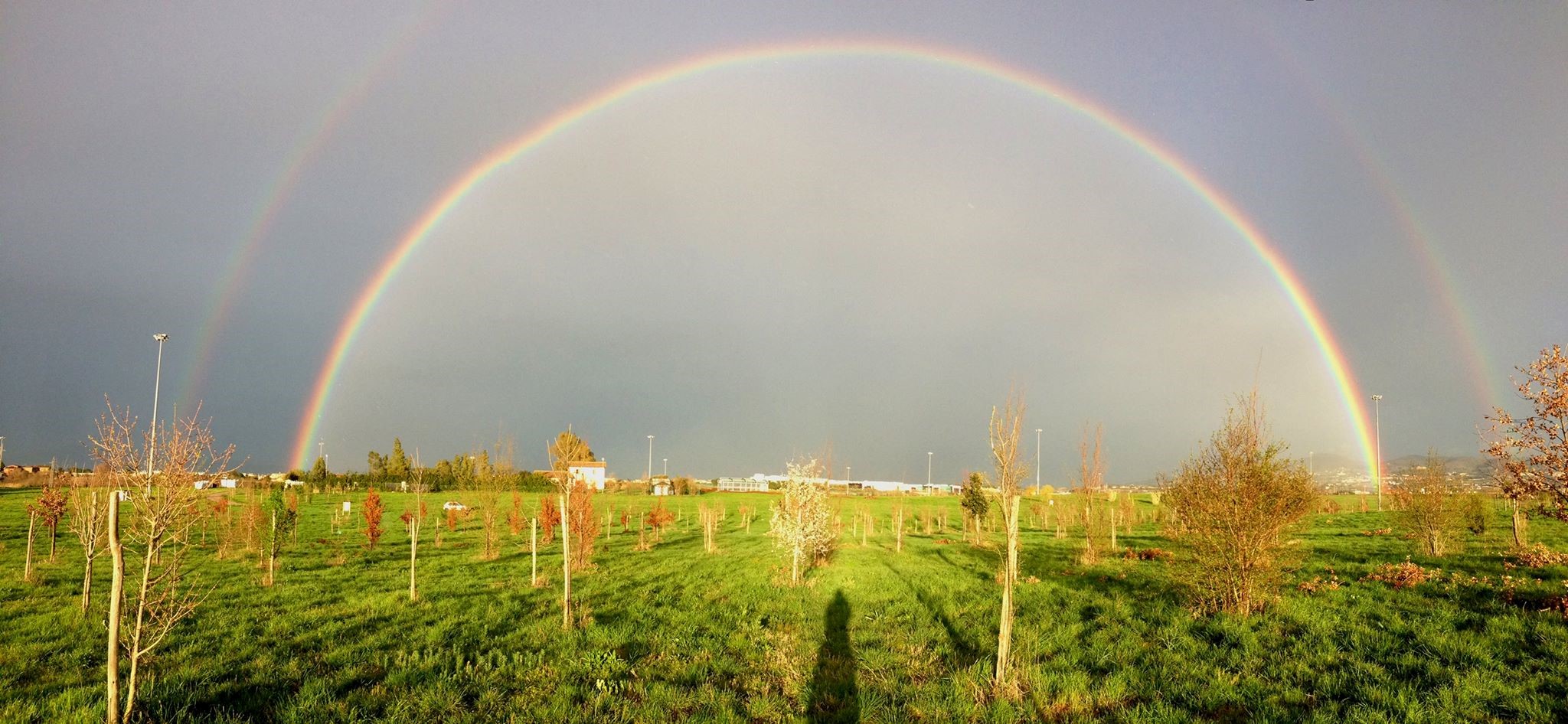
1: Mesophile Wood Overview.
The area along viale dell'Archiginnasio was hence built, creating important
environmental implications and stimulating wholly new research and development activities for Tor Vergata researchers of the botanical, ecological and plant physiology sectors. Such research enables the study of preservation modes for relevant native plant associations on the Italian and international territory.
Furthermore, this allows training activities for students, PhD students and citizens with regard to landscape conservation, ex situ conservation, testing of plant modules suitable for appropriate CO2 reduction
in urban areas as well as biodiversity enhancement.
In November of 2012 the construction of the Thematic Gardens (Picture 2) was launched, i.e. an area dedicated to plants sharing the same theme. The first area that was planted is the garden of music, which collects plant species used to make musical instruments and plants that have inspired classical and modern music.
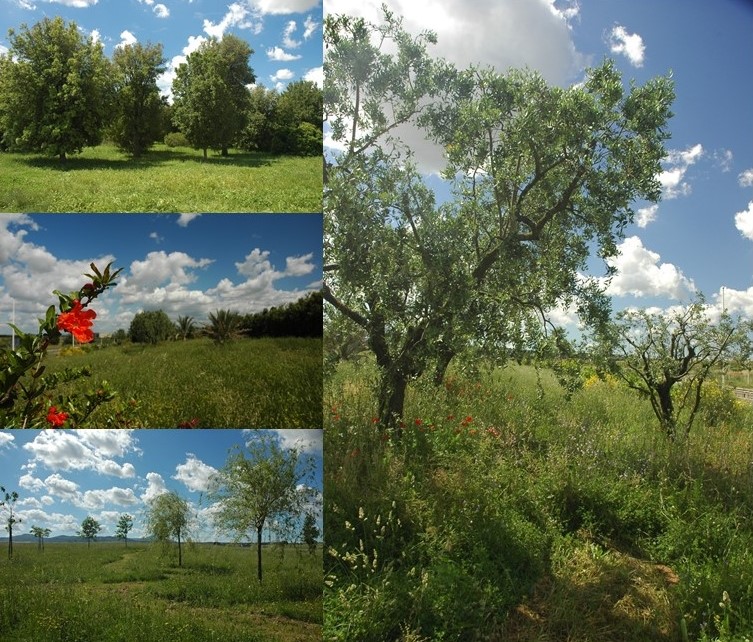
2: Some specimens of the Garden of Music, the Biblical Garden and the maquis.
A further major intervention dates back to spring 2013, when the vegetation range around the entire perimeter of the Botanic Garden was planted. The hedge is about 2000 m long and is organised into several modules that represent different wood associations: from maquis to deciduous mixed forest, with a total of about 400 trees and over 2000 shrub specimens (Picture 3).
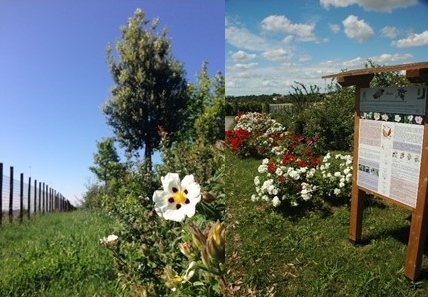
3: View of a section of hedge fence and rose collection (left to right).
In 2014 some private collections were donated: thus a collection of succulent plants was acquired too (Picture 4). The collection has about 300 species, some of which feature in Appendix I and Appendix II of C.I.T.E.S. list. They will soon be planted in the new greenhouse built specifically to host this collection, within which different habitats will be realised.
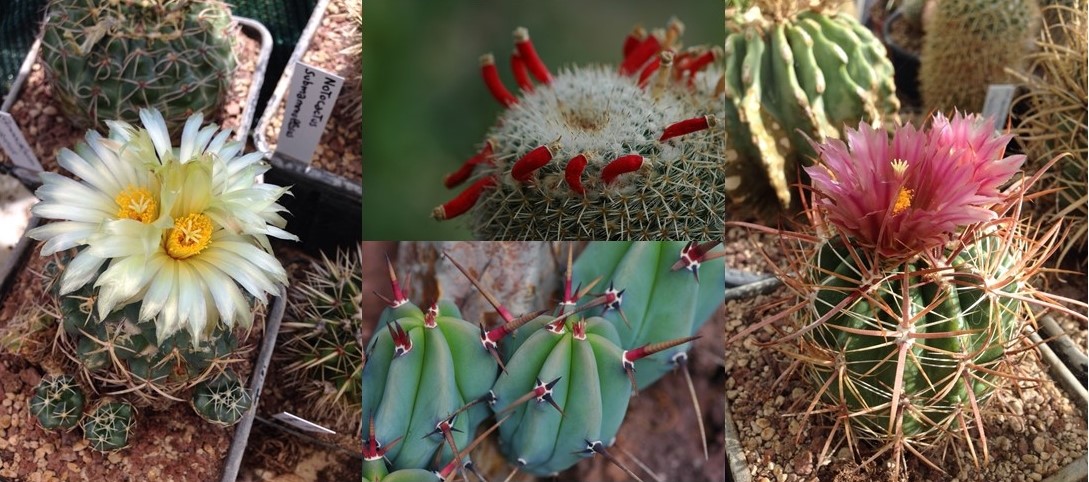
4: Some specimens of the succulent plant collection. Coryphantha elephantides Lemaire (left), Mammillaria parkinsonii Ehrenberg (top centre), Mytillocactus geometrizans (Mart.) Console (bottom centre), Ferocactus sp. (right).
Subsequently a collection of carnivorous plants was created (Picture 5), which is still under development: there are currently 42 different species and about 21 hybrids and varieties.
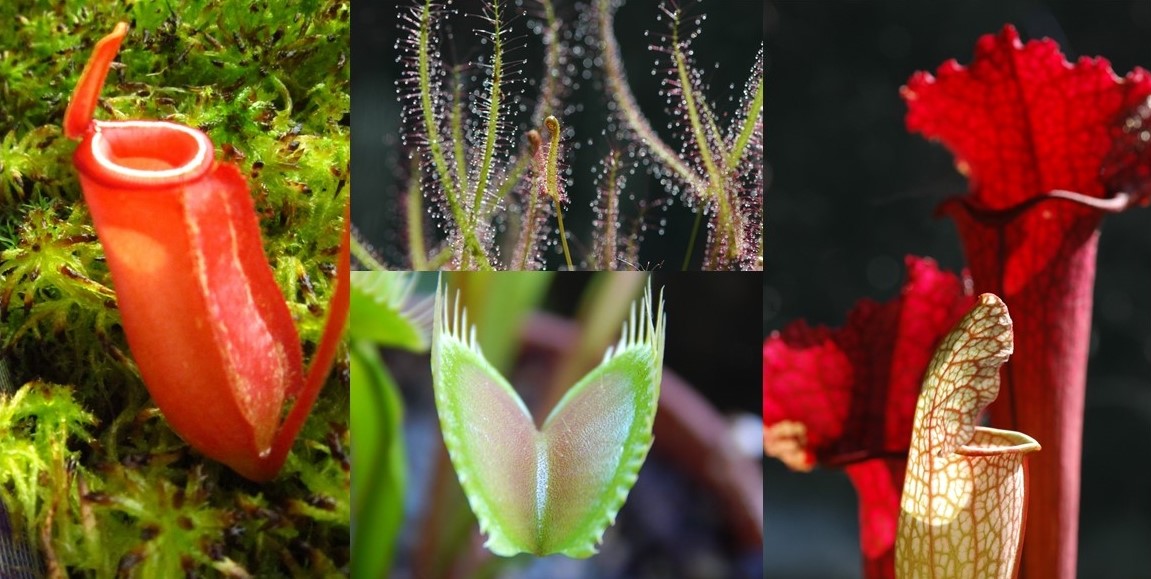
5: Some of the collection specimens. Nepenthes x 'Bloody Mary' (left), Drosera binata Labill. (top centre), Dionaea muscipula Soland. ex Ellis (bottom centre), Sarracenia x 'Juthatip Soper' (left).
In spring 2015 an oak collection was planted (Picture 6); it covers an area of 2 hectares and consists of approximately 134 species (170 specimens). The collection was divided according to the original geographical areas of the single taxonomic units. Five different areas creating a continuum can hence be identified (i.e. Northern America, Central America, Europe, Asia and Northern Africa). In the same period a collection of Aesculus sp. was planted too, which includes all 16 species existing worldwide.
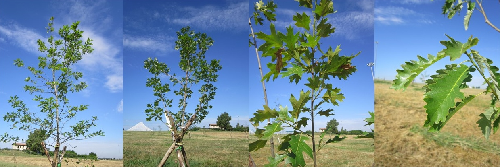
6: Some of the collection specimens. Quercus texana Buckley, Quercus macrocarpa Michx., Quercus x ‘Bushii’ Sarg., Quercus x ‘Deamii’ Trel. (left to right).

